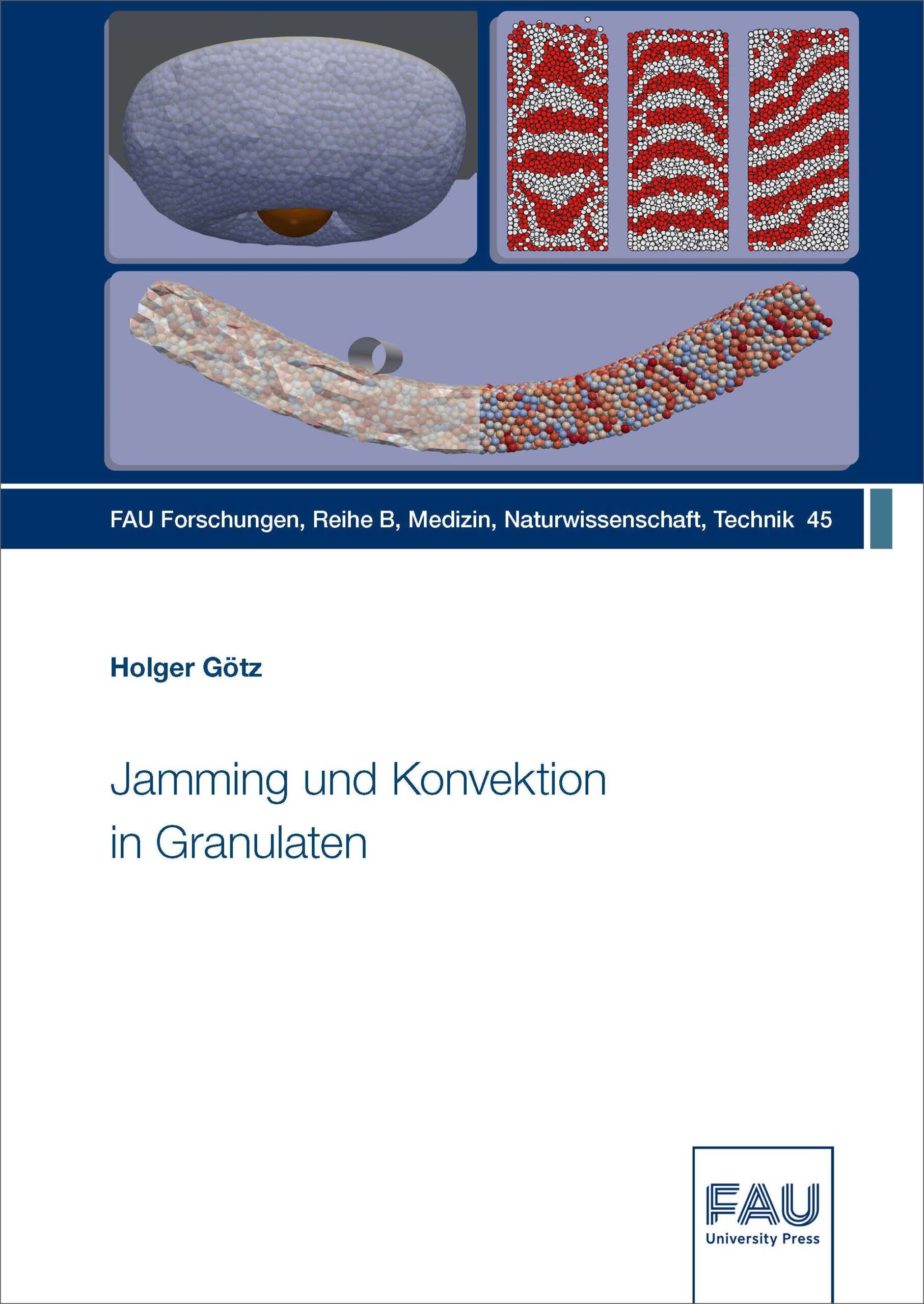Description
Granular media changes its properties drastically when the particle density is increased and the granulate undergoes the jamming transition: A loose granulate can behave fluid-like or gaseous and does not provide resistance to external stress. In the jammed state, however, the relative particle positions are essentially persistent, and the granulate is stable against externally applied stress. Technical applications of the jamming transition can be found particularly in the field of soft robotics (e.g. the granular robot gripper, granular paws or granular metamaterials). They usually consist of a granulate encased in a membrane. The jamming transition is then achieved by applying a negative pressure and thereby compressing the granulate. This work presents a method for simulating such applications. The method enables the simulation of membranes together with granulates in discrete element simulations. For the granular gripper, the simulations are used to demonstrate that high holding forces are generated with granulates composed of soft particles, while low holding forces are achieved with granulates of hard particles. Additionally, the deformation behaviour of a jammed granular metamaterial is investigated and characterized. It is shown that during large deformations of the material, the contact network is re-formed, although the granular particles themselves hardly reorganize. Another focus of this work is the investigation of granular media in vibrated cylinders under zero-gravity conditions. Besides a periodic jamming transition, the vibration induces convection which, as expected, always has an axis of symmetry perpendicular to the direction of vibration. It is shown that this symmetry is broken when using certain vibration parameters or when the cylinder is inclined against the direction of vibration.


Reviews
There are no reviews yet.